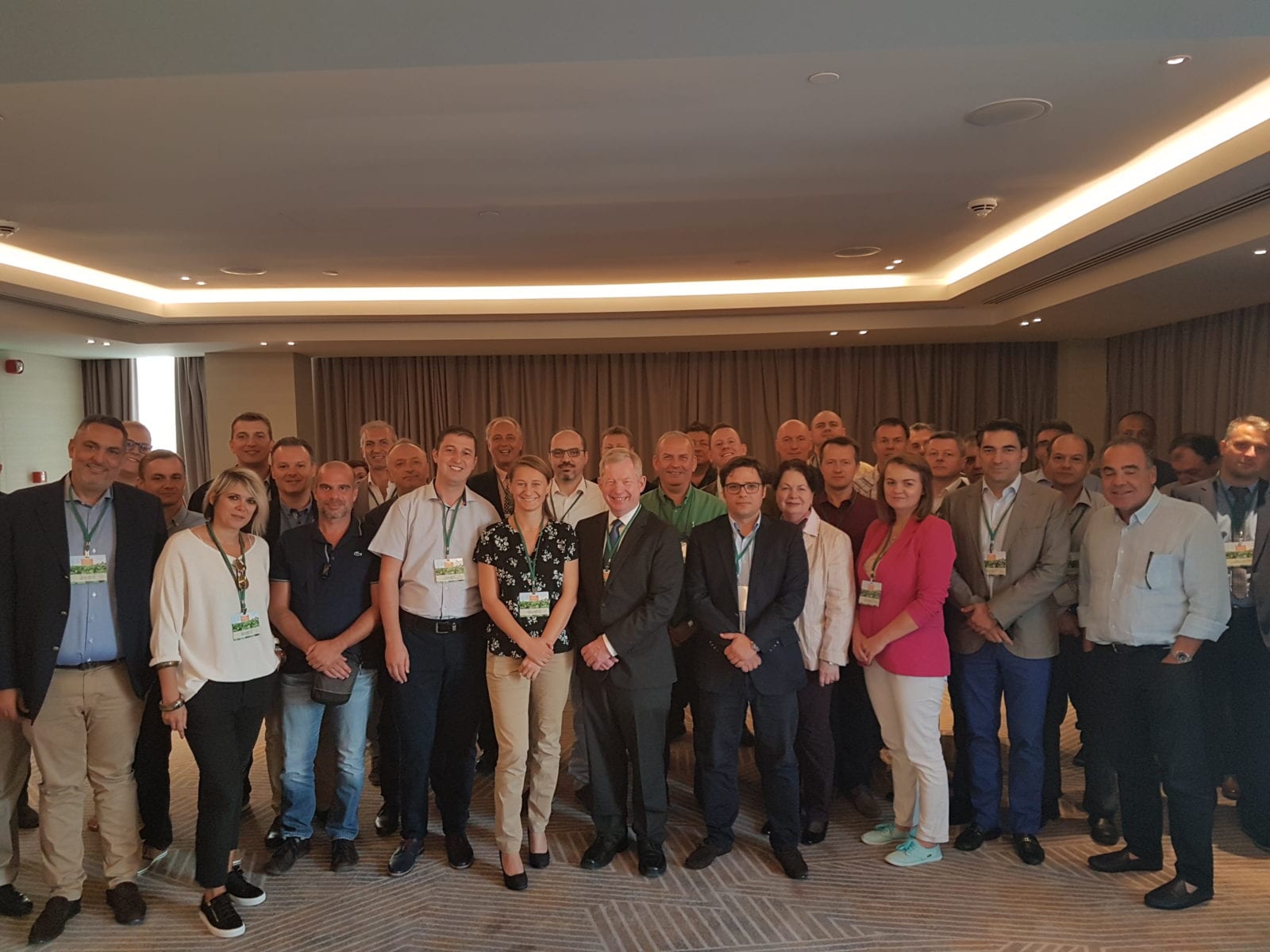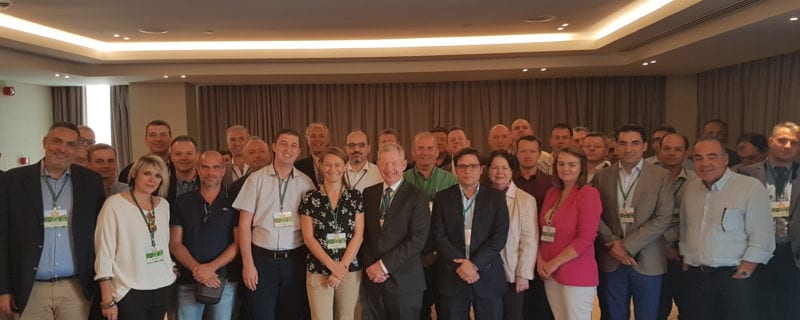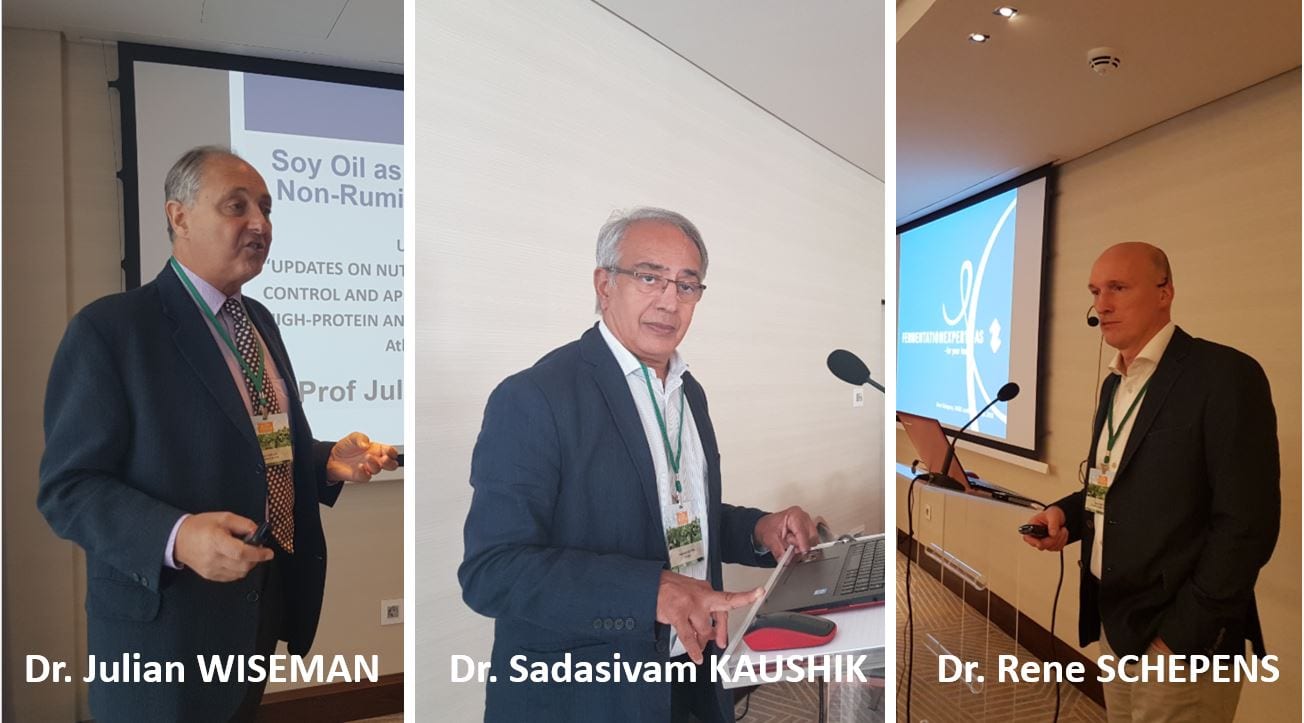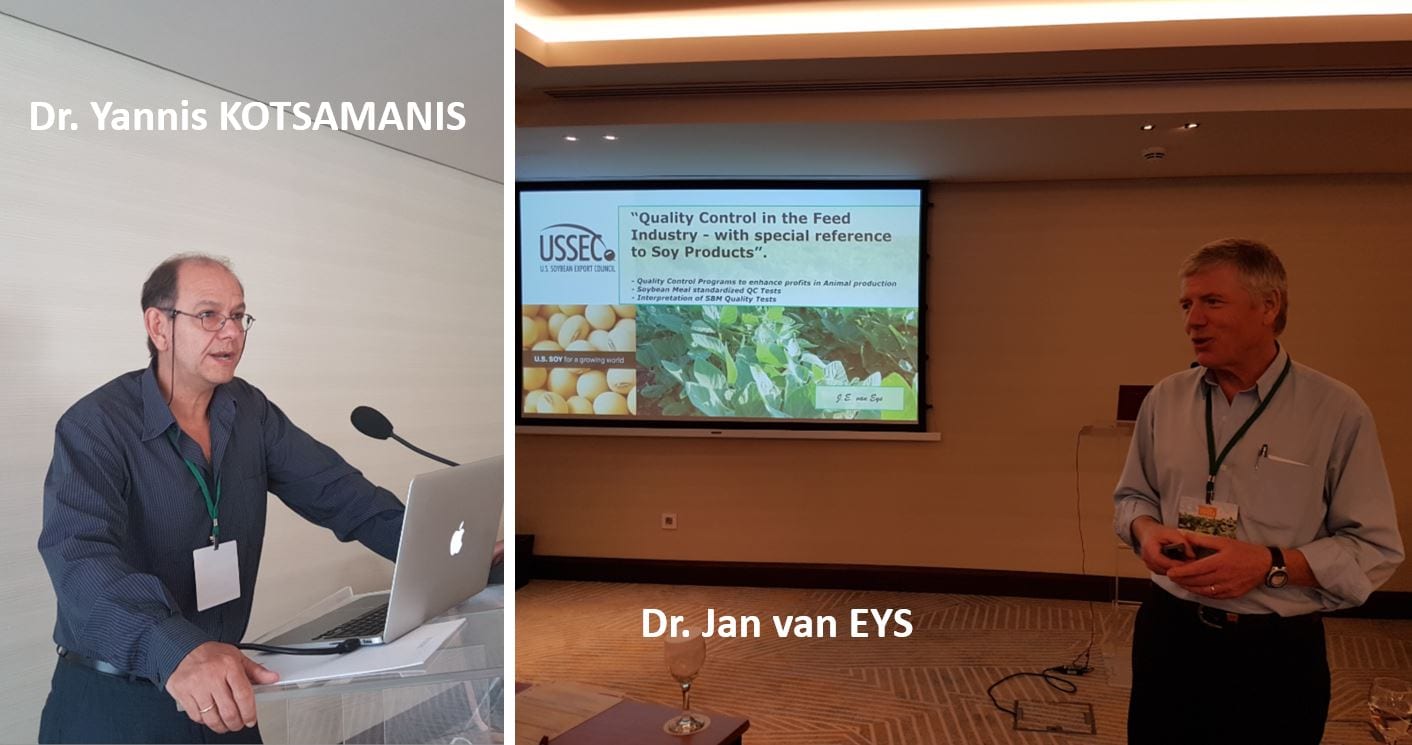European Customers Learn More about 2nd Generation High Protein, High Energy Soy Ingredients at Athens Conference
- Category:
- General News

USSEC held a two-day event in Athens, Greece dedicated to second generation high-protein and high-energy soy ingredients. The main goal of the event was to emphasize U.S. Soy quality attributes as a key supplier for the growing specialty soy protein processing industry from Europe and to increase awareness of nutritional value, quality control, and the application of second generation high-protein and high-energy soy derived ingredients: soy protein concentrates, soy insulates, fermented soy, soy oil and derivatives among the European animal industry, which remains the second largest U.S. Soy customer in the world). Education remains the key — otherwise, cheap products will soon flood the markets, as current and potential users of soy concentrates and fermented ingredients are not able to place a value on quality.

There is increased recognition and awareness of the potential and importance of soy products in the production of high quality livestock feeds. This is particularly true for improved or second-generation soy products such as soy protein concentrates (SPC), soy protein isolates (SPI), fermented or enzymatically treated soybean meal or soy oils and its derivatives.
These products are increasingly used in specialty feeds for young animals or aquatic species. While this development is worldwide, it takes on a special importance in Europe where the demand for “natural” and “bio” (biologically-balanced) systems of animal production are preferred and where the use of feed based antibiotics or synthetic compounds is restricted. These changes in feed formulations coincide with a livestock and feed industry in Central and Eastern Europe that is undergoing a rapid expansion and a Mediterranean aqua industry that is demonstrating strong growth. Consequently, in this part of the world, the demand for specialty feeds is likely to increase significantly in the near future, and with this, the use of high quality (high-protein and energy) soy ingredients.
The processing technologies involved in the production of these specialty soy products are critical in the determination of their nutritional value and quality characteristics. The primary objective of these technologies is the elimination of anti-nutritional factors (ANF). However, these technologies differ greatly in their production processes and, consequently, in the effects on the final product leading to a wide range of products with varying concentrations of ANF and levels of digestible nutrients.
A better understanding of the technologies employed and the resulting effects on nutritional characteristics of the resulting products should improve their utilization, thus feed performance, and stimulate the usage of soy products. To this purpose, USSEC organized a two-day technical conference in Athens, Greece on September 25 and 26.

During this meeting, well-recognized speakers from U.S. and European universities and leading commercial soy processing companies addressed details of these products in terms of their production, nutritional value, and application. The presentations focused on issues confronted by nutritionists, quality control, purchasing managers, and key decision makers focusing primarily on the characteristics of the European-Mediterranean feed industry.


As a result, within the coming months it is expected see a boost to the novel soy protein products, mainly manufactured in the U.S. and from U.S. Soy.